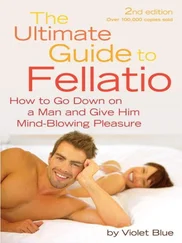3
A man riding a train may incarnate alienation (the commuter) or rotation (i.e., the English variety: “I was taking a long-delayed holiday. In the same compartment and directly opposite me, I noticed a young woman who seemed to be in some sort of distress. To my astonishment she beckoned to me. I had planned to get off at North Ealing, but having nothing better to do, I decided to stay on to render what assistance I could…”) But he is also admirably placed to encounter the Return or repetition. Tom Wolfe, lying in his berth while the train passes by night through lonely little Midwestern towns, is alienation re-presented and so reversed. He may be lost and by the wind grieved but he is withal triumphant. But George Webber going home again and Charles Gray going back to Clyde are transmitted intact — once the reader, who has never been to Clyde or Asheville, has made the shift. But this is not rotation, for it is a deliberate quest for the very thing rotation set out at any cost to avoid; the rider has turned his back upon the new and the remote and zone crossing, and now voyages into his own past in the search for himself. It is thus in the nature of a conversion. Unlike rotation, it is of two kinds, the aesthetic and the existential, which literature accordingly polarizes. The aesthetic repetition captures the savor of repetition without surrendering the self as a locus of experience and possibility. When Proust tastes the piece of cake or Captain Ryder finds himself in Brideshead, the incident may serve as an occasion for either kind: an excursion into the interesting, a savoring of the past as experience; or two, the passionate quest in which the incident serves as a thread in the labyrinth to be followed at any cost. This latter, however, no matter how serious, cannot fail to be polarized by art, transmitting as the interesting. The question what does it mean to stand before the house of one’s childhood? is thus received in two different ways — one as an occasion for the connoisseur sampling of a rare emotion, the other literally and seriously: what does it really mean?
Repetition is the conversion of rotation. In rotation, Shane cannot stay. In repetition, Shane neither moves on nor stays, but turns back to carry the search into his own past (we need not consider here Kierkegaard’s distinction that true religious repetition has nothing to do with travel but is “consciousness raised to the second power”—which I take to be equivalent to Marcel’s secondary reflection). In East of Eden Steinbeck leaves the wheel of rotation, the wayward bus, and with a great flourish turns back to Salinas and the past. In a less cluttered repetition, In Sicily, Vittorini’s “I,” on the occasion of a letter from his father, leaves his life of everydayness in Milan, where he is besieged by “abstract furies,” and makes the pilgrimage back to Sicily. It is a very good repetition, or as Hemingway says in a somewhat purple introduction, it has rain in it. Like rotation, repetition offers itself as a deliverance from everydayness, yet it is, in a sense, the reverse of rotation. It is also a reversal of the objective-empirical. The latter world view cannot get hold of it without radically perverting it. For example, the dust jacket of Vittorini’s book says something, as I recall, about modern man’s renewing his vital energies by rediscovering his roots, etc. This remark is no doubt true in a garrulous dust-jacket sense, yet it is the very stuff of the “abstract furies” which drove him from Milan in the first place. It is the objective-empirical counterattack, the attempt to seize and render according to its own modes the existential trait — which it does only by rereversing and alienating. (Even when a critic tries to stay clear of the abstract furies and writes of The Adventures of Augie March that it has the “juices of life in it,” if it did have any juices, he is already drying them up.)
To say the least of it, then, whatever the ultimate metaphysical issues may be, the alienated man has in literature, as reader or writer, three alternatives. He may simply affirm alienation for what it is and as the supreme intersubjective achievement of art set forth the truth of it: how it stands with both of us. Such is Joseph K.: Kafka’s pointing at and naming alienation has already reversed it, healing the very wound it re-presents. For an intersubjective discovery of alienation is already its opposite. Rotation, on the other hand, is transmitted intact. Repetition is polarized, transmitting as the interesting, canceling as the existential. What is omitted is the serious character of the search. If it should happen that a real Charles Gray came to himself one morning in the full realization of the absurdity of his life in the suburbs and if on the occasion of a chance recollection of Clyde he had the strongest inkling that back there, not ahead, lay the thread in the labyrinth he had lost, and if, like Kierkegaard’s young man, he developed a passion for recovering himself beside which his family, his work, science, art, were of no account whatsoever — such a passion would not transmit aesthetically as a passion but only as the interesting. This is to testify not to an artistic deficiency of the writers of repetition but to the validity of Kierkegaard’s aesthetic stage — which can in no wise be self-transcending.
Marquand hit the mother lode when he applied the device of the Return to the promising vein of exurbanite alienation. The disenchantment of Charles Gray may never go beyond the genteel limits of irony, of the attractive emotion with which he suffers his wife’s conversation (“Aren’t you going to wear your ruptured duck today?”); it needn’t go beyond this limit; indeed it should not — it is impossible to imagine Charles Gray in the full grip of anxiety, staring at his hand like Roquentin and shaking like a leaf at what he sees. It is altogether inappropriate that he should be. His little excursion into alienation — the pleasant return to Clyde, the mild disenchantment, stoically borne, which follows — is no more nor less than what we bargained for. It would not do at all for Charles Gray to come to despair or to experience a religious conversion.
Whatever may be the ultimate decision — and one is tempted to contrast Marquand’s Book-of-the-Month Club disenchantment with Kafka’s Mitteleuropa alienation — the fact is that Charles Gray is the suburban counterpart of Joseph K. (and in my opinion, a not unworthy counterpart: the first hundred pages of Point of No Return are of a very high order). Charles Gray is a gentle wayfarer who is true to himself in the search for himself, and if he moderately despairs in the end and has recourse to a poetic Stoa, at least he knows and we know how it stands with him.
It is otherwise with the hero of The Man in the Gray Flannel Suit, who is said to be plowing the same field but who actually exists one whole spiral beneath Marquand. Tom Rath is interesting as a regression from whatever authenticity Charles Gray achieves in his recognition of alienation and the deliverance therefrom, a regression which masquerades as rotation and is not even that. We come upon Tom Rath in the same promising wasteland as Charles Gray, the everydayness of the Manhattan-to-suburb axis. His way out is not repetition, however, but rotation and a remarkably shoddy variety of rotation. It is a device in which dishonesty is compounded at least twice — once in what the writer intends to do and again in what he does without intending to do — to issue in the standard rotative rhythm of the soap opera. Whatever Marquand’s shortcomings, he knows what he can do and he does it very well. He shows a man in an unauthentic situation and he explores one interesting alternative to it, Tom Rath, on the other hand, embarks on a career of bad faith and counterfeit motivation in which righteous alternatives conceal their opposites.
Читать дальше












